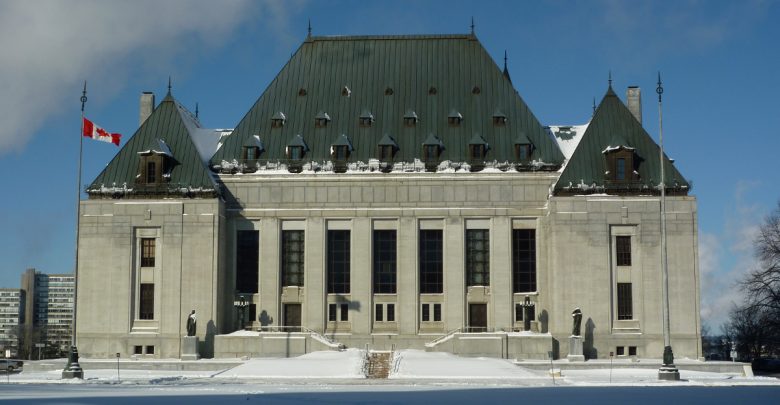 Supplied
SuppliedHow many times can the Canadian state shut the door on opportunities that could tangibly advance reconciliation? Too many to count, it seems.
A decisive blow was recently dealt to reconciliation and indigenous rights when the Supreme Court of Canada, in a 7-2 decision, ruled that the federal government doesn’t have to consult with indigenous groups when formulating legislation that may affect indigenous and treaty rights which are enshrined under section 35 of the Constitution. The Liberal government, exhaling a sigh of relief, supported the decision, stating that such consultation would be “be far too onerous and slow down the legislative process considerably.”
While it may be “onerous” to mandate indigenous consultation in the legislative process, doesn’t the government owe it to people whose land they colonized, as well as dispossessed through the dishonest negotiation of treaties?
This decision echoes a continuing trend in Canadian state-indigenous relations, know as what scholars, like Glen Coulthard and others, have coined as the politics of recognition. The politics of recognition entails that the state does indeed recognize its relationship with indigenous peoples as structured through a settler-colonial framework, but it refuses to dismantle this relationship entirely. Power is held asymmetrically; reconciliation is a goal to be achieved, but only on the prerogative of the state, not through an equal, collaborative effort where both groups hold equal autonomy and power.
As a result, many movements towards reconciliation in the past decade have been defined through symbolic gestures, such as the apologies made for residential school survivors back in 2008 and 2015. While these are important stepping stones towards reconciliation, other structural issues, such as recognition of indigenous and treaty rights in their fullest form, are downplayed by the state.
This decision is a textbook case study in how such processes plays out. The court suggested that indigenous groups can still use the courts to challenge certain laws, but as indigenous rights lawyers have pointed out, this means continuing putting indigenous people through the considerable time and money sink known as the legal process in order to achieve the same results as consultation.
And while there is officially no governmental duty to consult, the court did rule that there’s a duty to act honourably when drafting legislation that may affect indigenous peoples. This ruling has no teeth, however, as no examples were provided as to what acting honourably would entail. Again, we see symbolic recognition of the importance of treaty relationships, but absolutely no concrete changes that would make this recognition true in its fullest.
Supreme Court Justice Andromache Karakatsanis noted that “applying the duty to consult doctrine during the law-making process would lead to significant judicial incursion into the workings of the legislature.”
While I’ll grant Justice Karakatsanis this, shouldn’t these legislative workings and legal frameworks be adapted and shifted to accommodate indigenous voices if they can’t be included now? This would, of course, result in a massive shift in how our nation-state is fundamentally structured, an especially daunting prospect for the Canadian state as it would jeopardize their near-monopoly of power in reconciliatory processes. But if reconciliation is to be achieved, this is what needs to occur.
This decision embodies the recognition that keeps the Canadian state in the paternal, powerful end of its relationship with indigenous peoples. It seems we, as a nation, are making lopsided progress towards reconciliation. We have begun to cultivate a culture of understanding and listening, but have failed to embody those values in our state practices. We need to move beyond empty promises.




